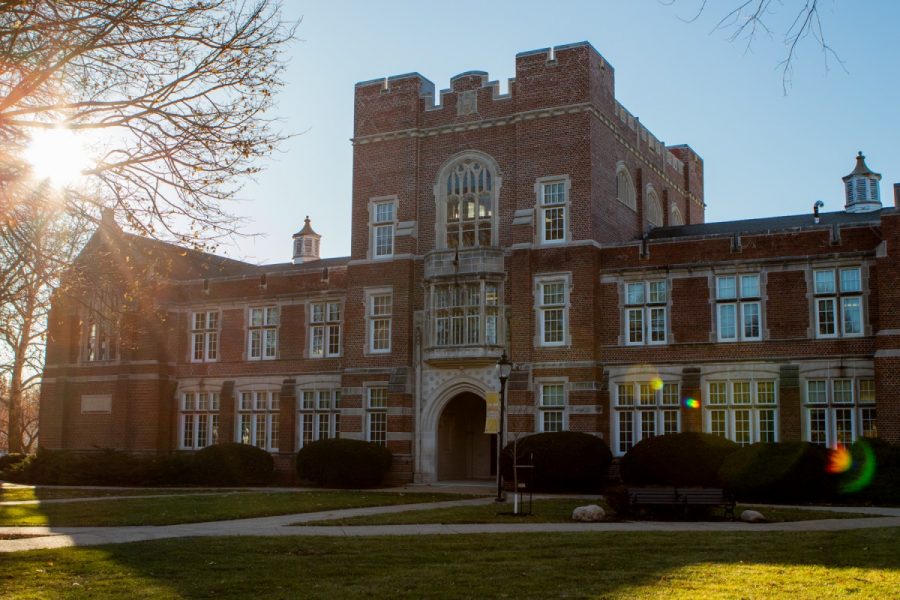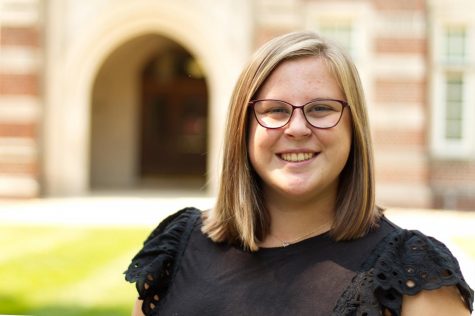Simpson College answers students and parent’s questions about returning to campus
August 12, 2020
Simpson College hosted a Town Hall for students and parents on Wednesday to address policies and concerns for the Fall 2020 semester via zoom.
Answering questions was President Marsha Kelliher, Vice President of Student Development & Planning Heidi Levine, Vice President for Business & Finance Division Cathy Hoch and Academic Dean John Woell.
The Town Hall had about 130 attendees, and the event lasted an hour. Some of the most critical questions from the town hall are reported below.
Levine went over the health guidelines for Simpson College that are set in place. The guidelines will consist of four color-coordinated phases. When students return to campus, the college will be placed on orange for at least the first two weeks. In this phase,
- Students must maintain social distancing by keeping 6 feet or more from others.
- Masks are required when inside all non-residential buildings, including private offices with one other individual present.
- Masks (or appropriately sized face shields) are required outside buildings if unable to practice 6 feet social distancing.
- Masks are required for campus housing public space.
- Group gatherings must not exceed more than ten outside of the classroom.
- Classroom size must operate at 50% capacity if space restrictions do not allow for 6 feet social distancing.
- Moodle Check-In: Monday-Friday check-in required by students, staff, and faculty.
Phase yellow guidelines include,
- Social distance by maintaining 6 feet or more from others
- Masks (or appropriately sized face shields) are required when inside all non-residential buildings and recommended in private offices with more than one person present.
- Masks are required outside buildings if unable to practice 6 feet social distancing.
- Masks are recommended for campus housing public spaces.
- Group gatherings: to be determined and may fluctuate based on State guidelines and the COVID-19 activity on campus and in Warren county.
- Classroom size: may operate at 100% capacity; social distancing recommended.
- Moodle Check-In: Monday-Friday check-in required by students, staff, and faculty.
Phase green guidelines include, (When a vaccine is available or reliable testing is more accessible)
- Mask use at the discretion of students, staff, and faculty.
- Moodle Check-In: Monday-Friday check-in required by students, staff, and faculty.
Phase red guidelines include,
- Virtual learning and working from home
Q: Will exposed students be separated from positive students?
“Yes,” Levine said. “Our goal is to remove students who need to be isolated or quarantined from their regular living environment and from other students to keep them as separate as possible. As much as possible, we are going to keep people in single units, but if we have to double up at all, we will make sure that we are not cross-contaminating in those situations.”
Q: How will you be checking in on those students who are in isolation or quarantine?
“Students who need to be isolated or quarantined, our director of health services will be checking in with them daily,” Levine said. “We will be having regular zoom or telephone contact with all of them so we can continue to monitor if they are experiencing symptoms. We will also be making sure that they get food delivered to them because if someone is in isolation or quarantine, we do not want them going to Pfieffer or Kent. That is one of the reasons we wanted to use the apartments is so that they have access to that kitchen during that period of time.
Q: If students are asked to leave campus again for the red phase, how will they be compensated? If students do not have a place to stay, will they be able to stay on campus?
“We will obviously look at that the same way that we viewed the situation in the spring,” Hoch said. “We will work to provide refunds to students, certainly if that is possible, and that would be our goal. Our goal would be to treat everyone fairly in that situation.”
“So, like in the spring, if we do need to switch to fully remote learning, we will again allow students to be on campus for a wide range of reasons to remain,” Levine said. “Those again are likely to be things like not having a stable home to return to or a safe home to return to. It might be not having sufficient broadband access at home. It might be that they are student teaching or doing an internship or something that would require them to be here.”
Q: If it is necessary for students to return home, will they be permitted to isolate on campus before returning to their home communities?
“We had situations in the spring where that happened,” Levine said. “We had students who had to return early from study abroad experiences and because of family members that had medical conditions needed to have a period where they were quarantining so that they knew they weren’t bringing COVID home with them.”
Q: If a student tests positive, does everyone that has a class with them get notified?
“No,” Levine said. “The greatest risk of exposure is when somebody is within 6 feet for more than 15 minutes. That is why seating in classrooms really matters.”






